Tom's Hardware Verdict
The BlackShark V3 Pro is packed with features, but suffers from some audio distortion and a lackluster microphone. It's a solid gaming headset, but it's not the endgame headset you're looking for.
Pros
- +
Simultaneous dual-wireless audio mixing!
- +
Multiple forms of connectivity, including USB and analog wired options
- +
Comfortable, nice-looking design
Cons
- -
Expensive
- -
Distortion in highs; not great for music
- -
Microphone is just okay
Why you can trust Tom's Hardware
Razer's BlackShark V2 Pro (2023) is one of my favorite gaming headsets ever. It's comfortable, sounds great, and it has a fantastic microphone. But it was still missing a couple of features that I wanted — namely, simultaneous 2.4GHz wireless and Bluetooth connectivity, so pesky things like phone calls or the sudden impulse to scroll through TikTok don't disrupt my gaming flow. When I asked PR at Razer if the company would ever consider implementing this feature, they said "no promises," and cited battery concerns as the reason. But it appears Razer's gotten over that concern, as its latest flagship headset, the Razer BlackShark V3 Pro, features simultaneous 2.4GHz wireless and Bluetooth connectivity, as well as active noise cancellation — and still gets up to 70 hours of battery life.
The BlackShark V3 Pro is a circumaural wireless gaming headset that's really aimed at premium gamers. Like its predecessors, it doesn't pretend to be a lifestyle headset at all: Its earcups don't swivel flat, and it features a sleek but very "headset" design with wire steel yokes, a prominent volume knob, and a large, detachable boom microphone. Design-wise, it's pretty similar to the BlackShark V2 Pro (2023) — sleek, black, and surprisingly comfortable. And it's much more versatile, with four forms of connectivity (2.4GHz wireless, Bluetooth, USB-C, and analog), plus ANC, and the ability to mix audio from more than one input. These features don't come cheap, however; the $250 BlackShark V3 Pro is on the pricier end — and it might be moving too far away from the line's "elite gamers only" philosophy.
Design and Comfort of the BlackShark V3 Pro
The BlackShark V3 Pro is an over-ear (circumaural) wireless gaming headset with a detachable boom microphone. It looks very similar to the BlackShark V2 Pro (2023), with plastic earcups, thin, steel wire yokes, and a leatherette headband with fabric-covered foam padding. It features an all-black colorway, which makes it look sleek and premium despite being made mostly of plastic and some sort of stretchy, sporty sweat-wicking (I assume) fabric. The headset also comes in a white colorway, which still has black fabric on the headband and earcups, as well as black wires and a black boom mic.

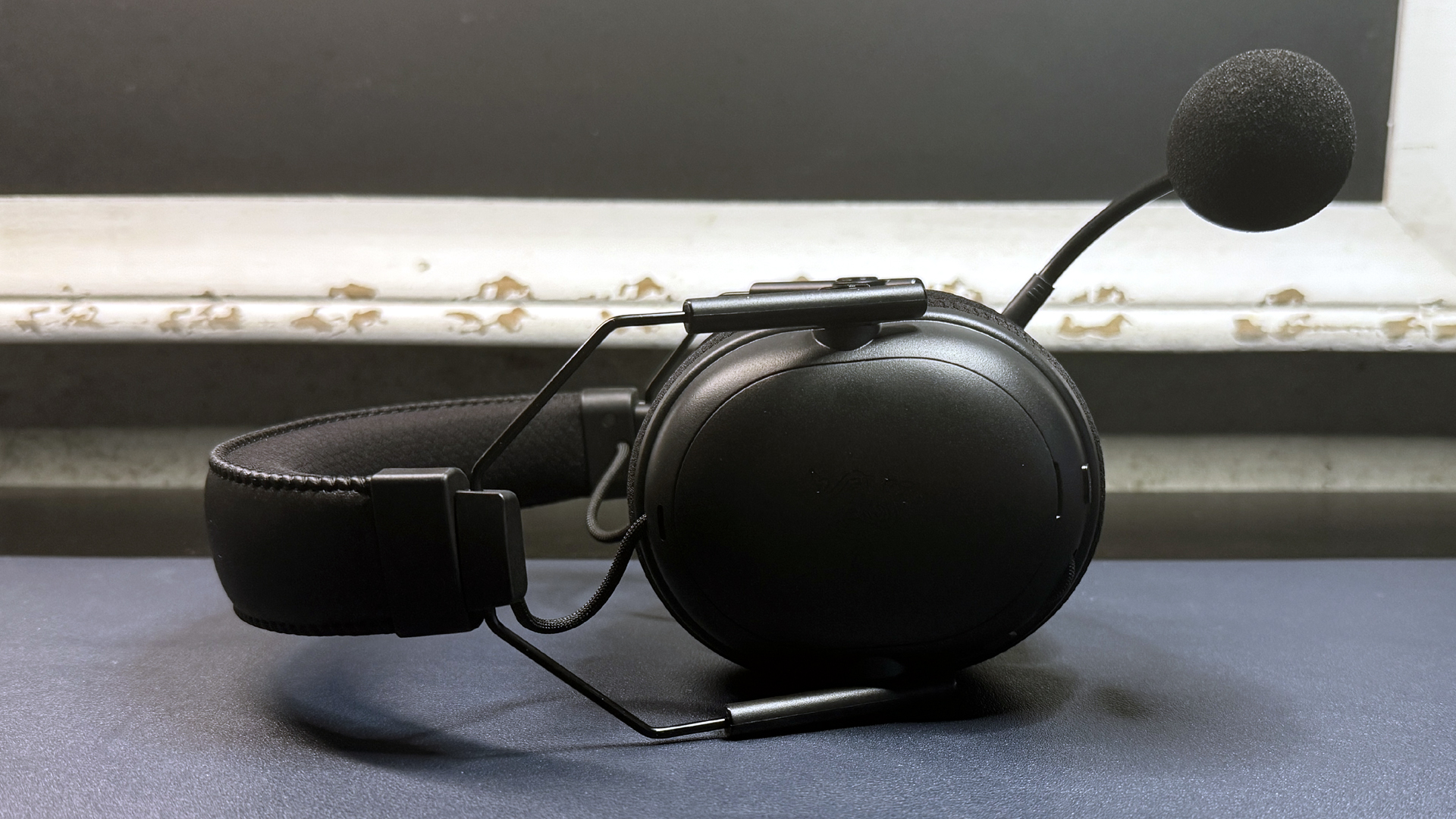
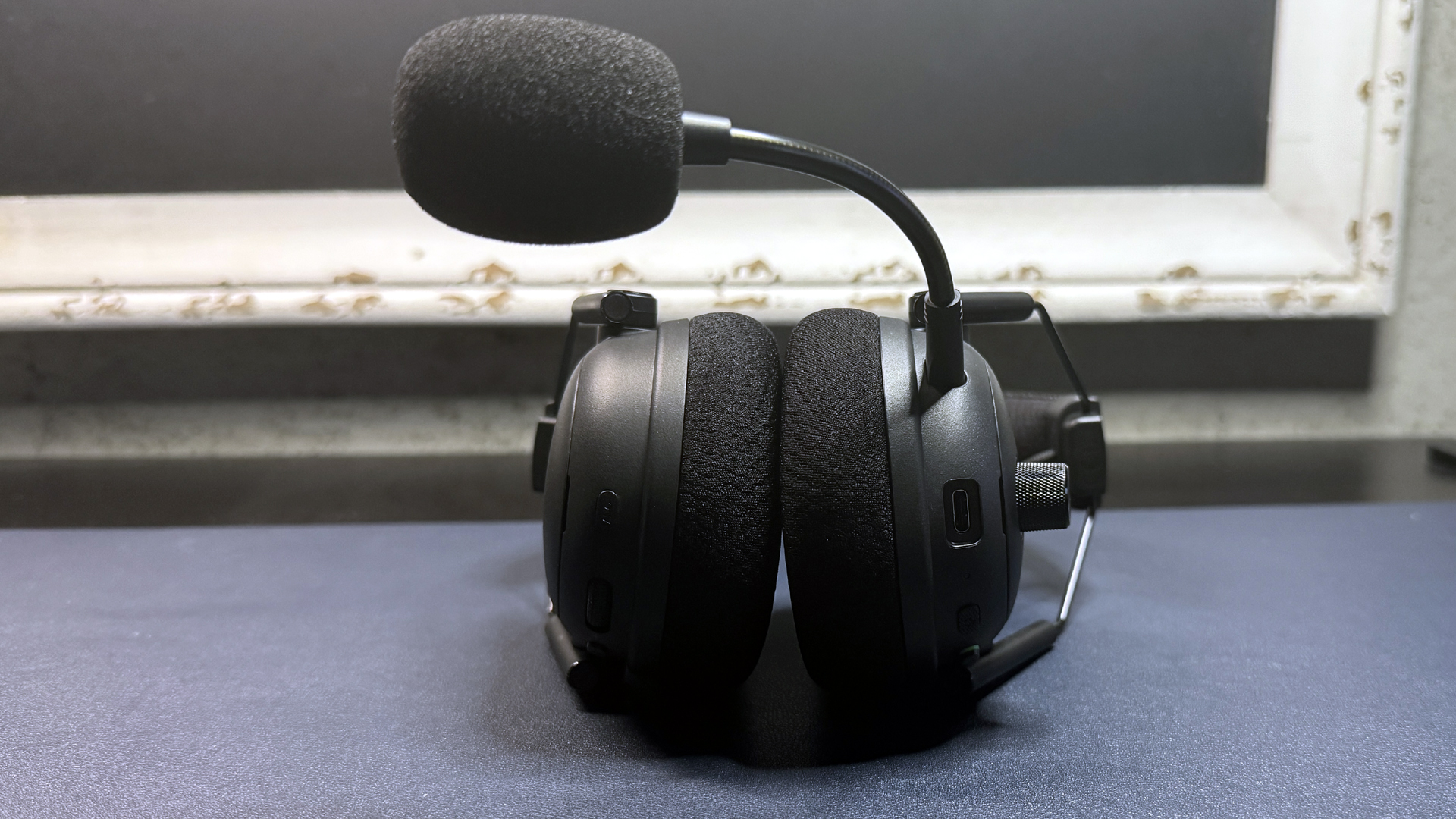
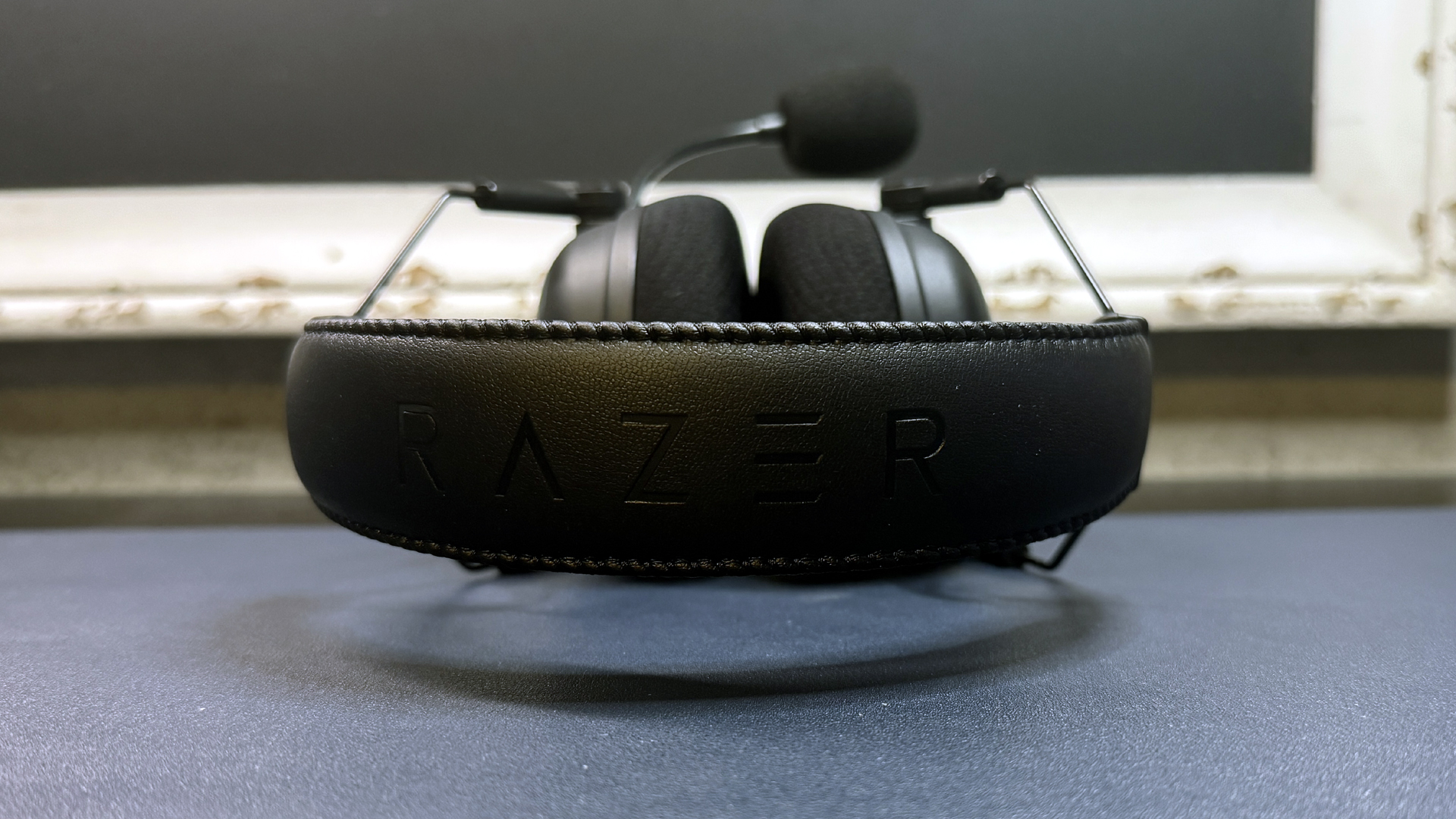
The headset is heavier than its predecessor, weighing 12.96 ounces (367g). This isn't too much of an issue, as it's still very comfortable, but I can definitely feel the difference between the BlackShark V3 Pro and the BlackShark V2 Pro (2023), whic weighs 320g . The earcups swivel, tilt, and are height-adjustable; unlike most headsets, the earcups themselves slide down the yokes (instead of the yokes moving). Because the earcups slide on the yokes, they are not locked in place in any way — this isn't an issue when the headset is on your head, but they can sometimes slide out of place when you're taking it off, and I found that minorly frustrating. Also, while the earcups swivel (the earcups on the V2 Pro didn't really swivel at all), they still don't swivel flat, so this is not really a headset that's easy to travel with.
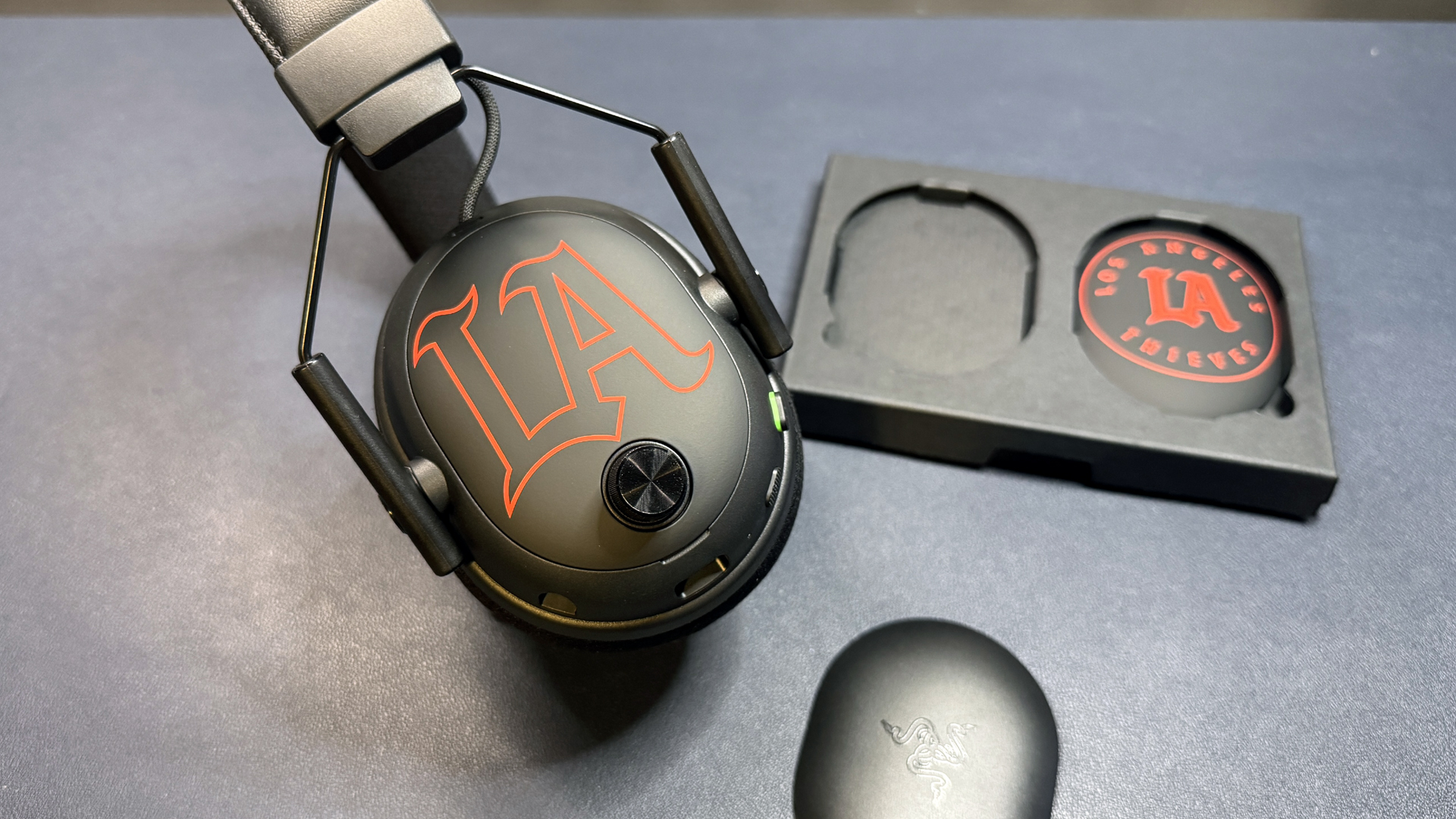

The headset has replaceable magnetic speaker plates — similar to the higher-end of SteelSeries' Arctis Nova series, such as the Arctis Nova Pro and the Arctis Nova 7 — but at the moment Razer doesn't sell any replacement plates separately. The company did, however, send me some custom speaker plates with the LA Thieves' logo. I naturally wondered if this was some sort of Triple-A team I hadn't heard of; turns out it's a Call of Duty eSports team. (Sorry, guys, I'm a real-life sports person.) Razer's site says other designs are "coming soon," but it looks like you'll only be able to buy the full headset with custom plates — not the custom plates themselves (at least, not yet). This definitely has the potential to be a cool feature, but we'll have to see what the eventual options are.
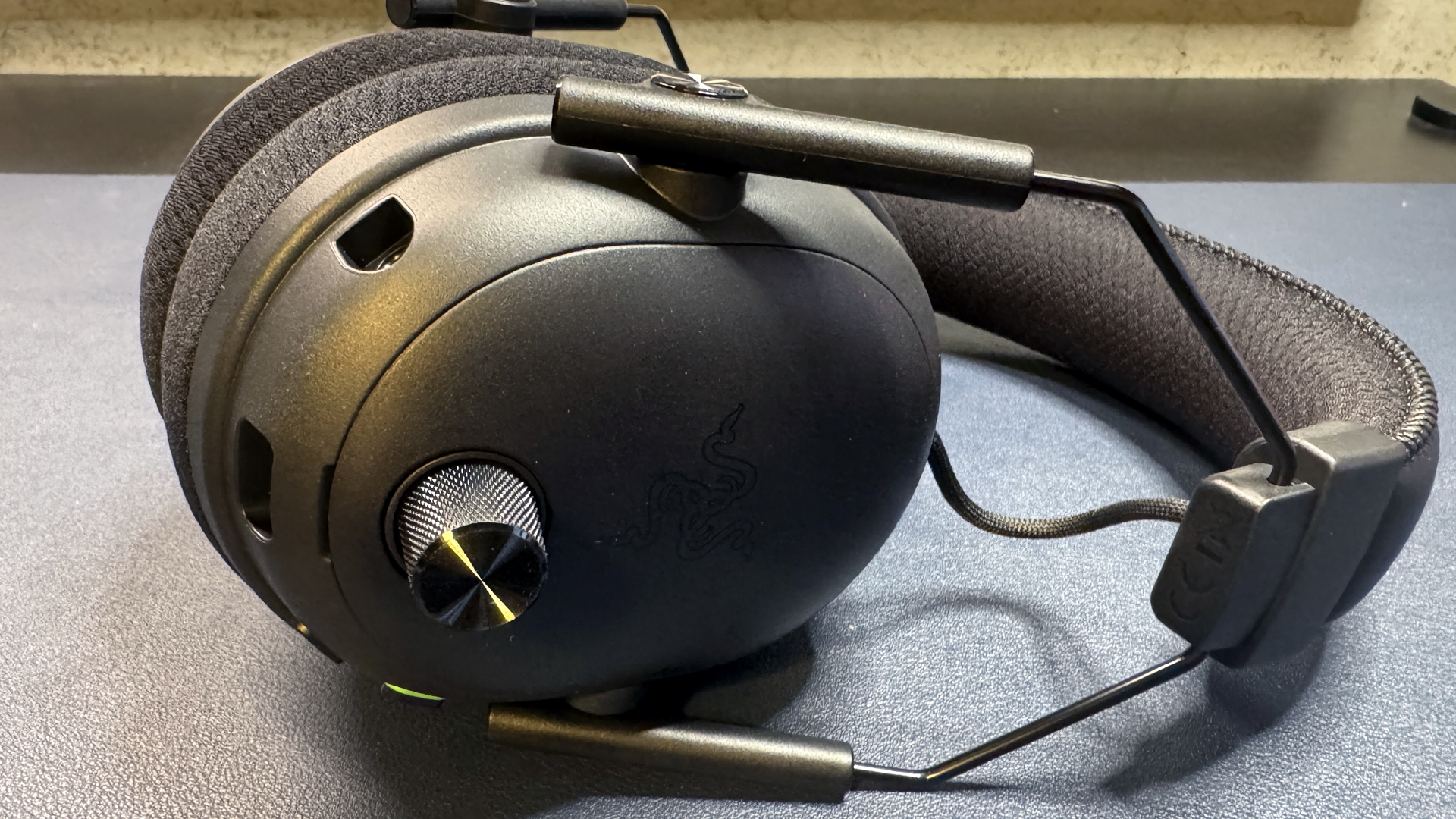

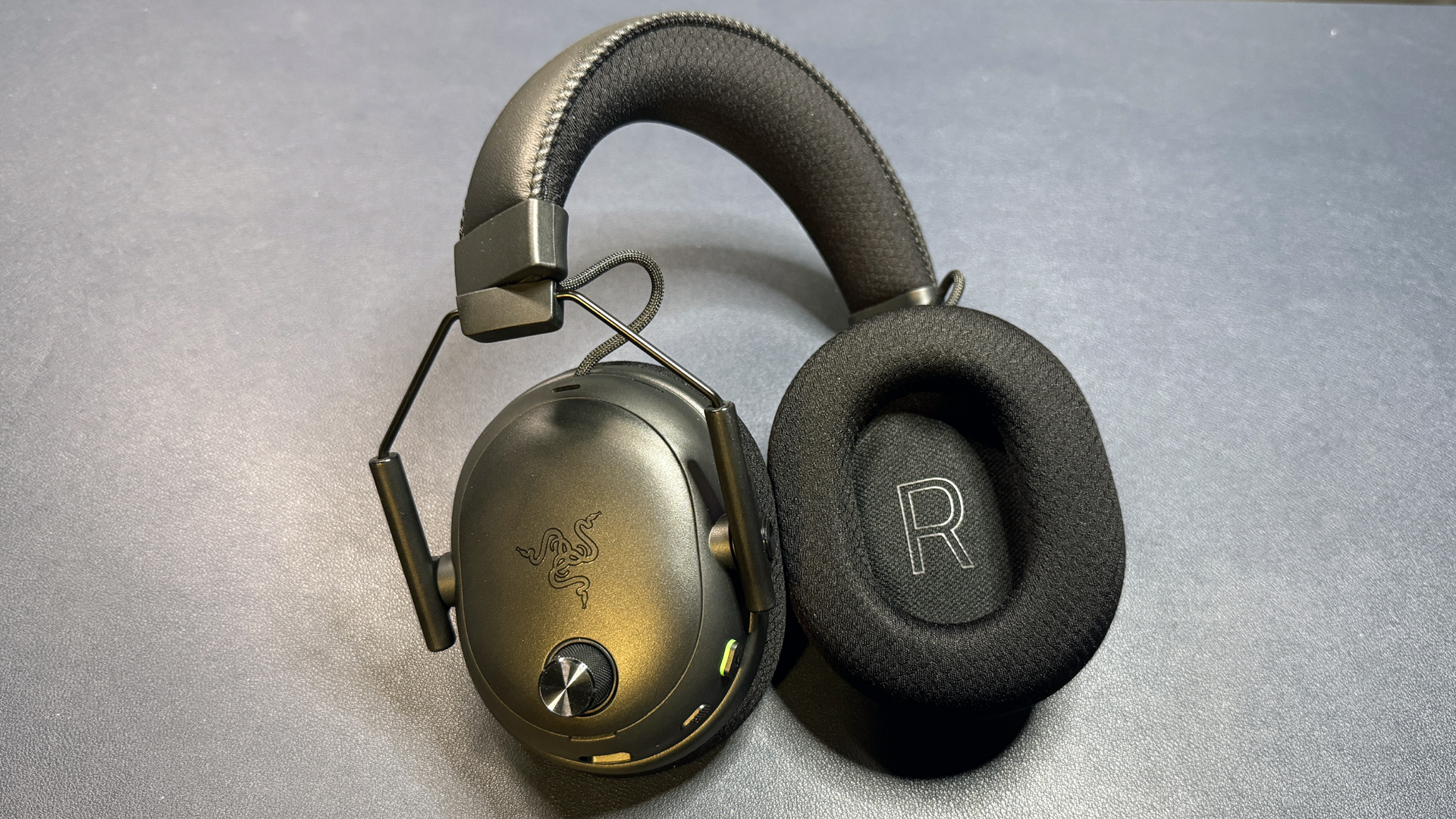
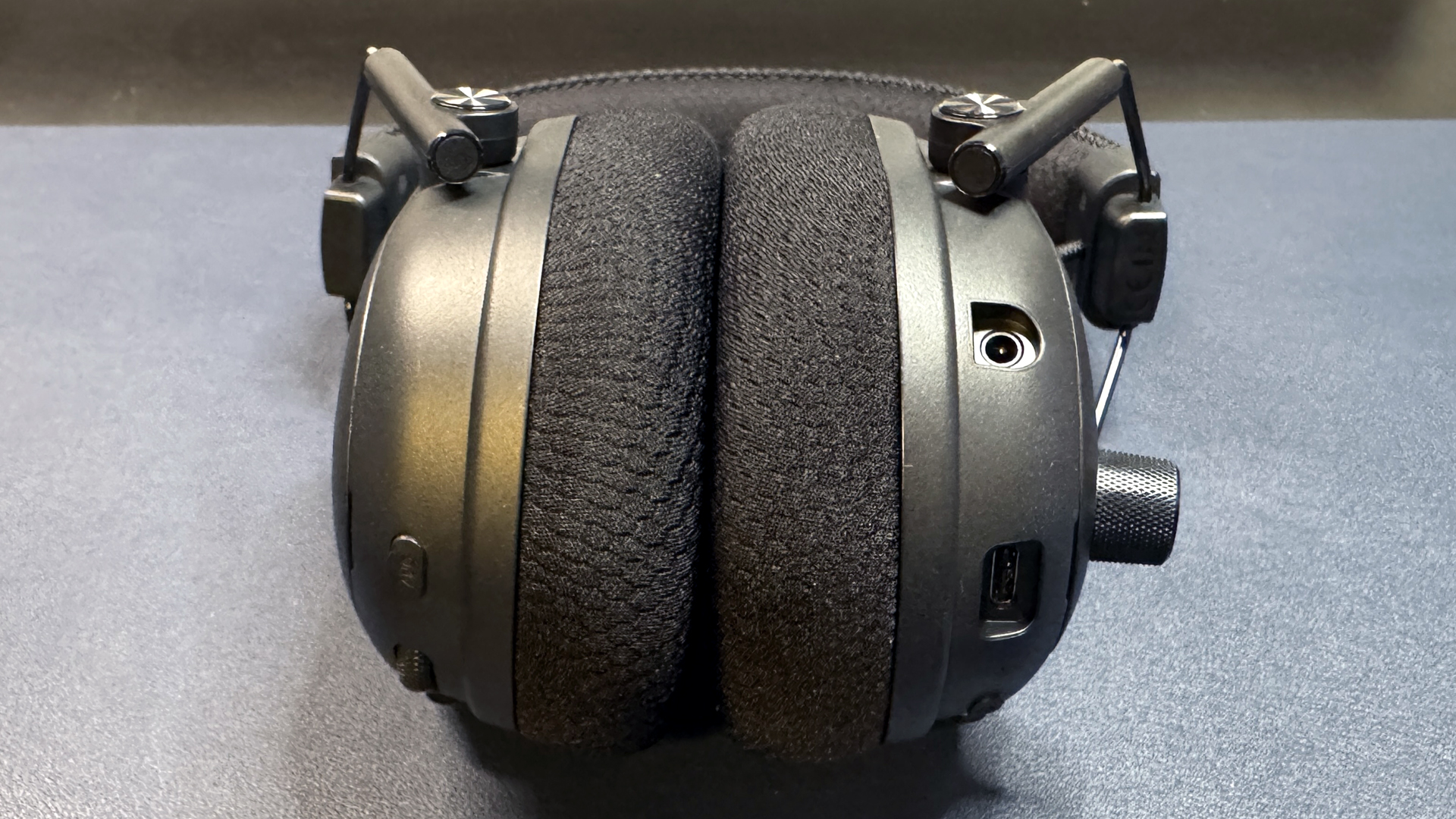
The earcups have several ports and controls, which is sort of expected when you have so many features. The left earcup features the signature BlackShark volume dial, which is perpendicular instead of sleekly hidden along the side of the earcup. This makes the headset more of a dedicated gaming headset in general, but I don't mind it — it's a sleek machined-black volume dial, and it looks and feels very premium.
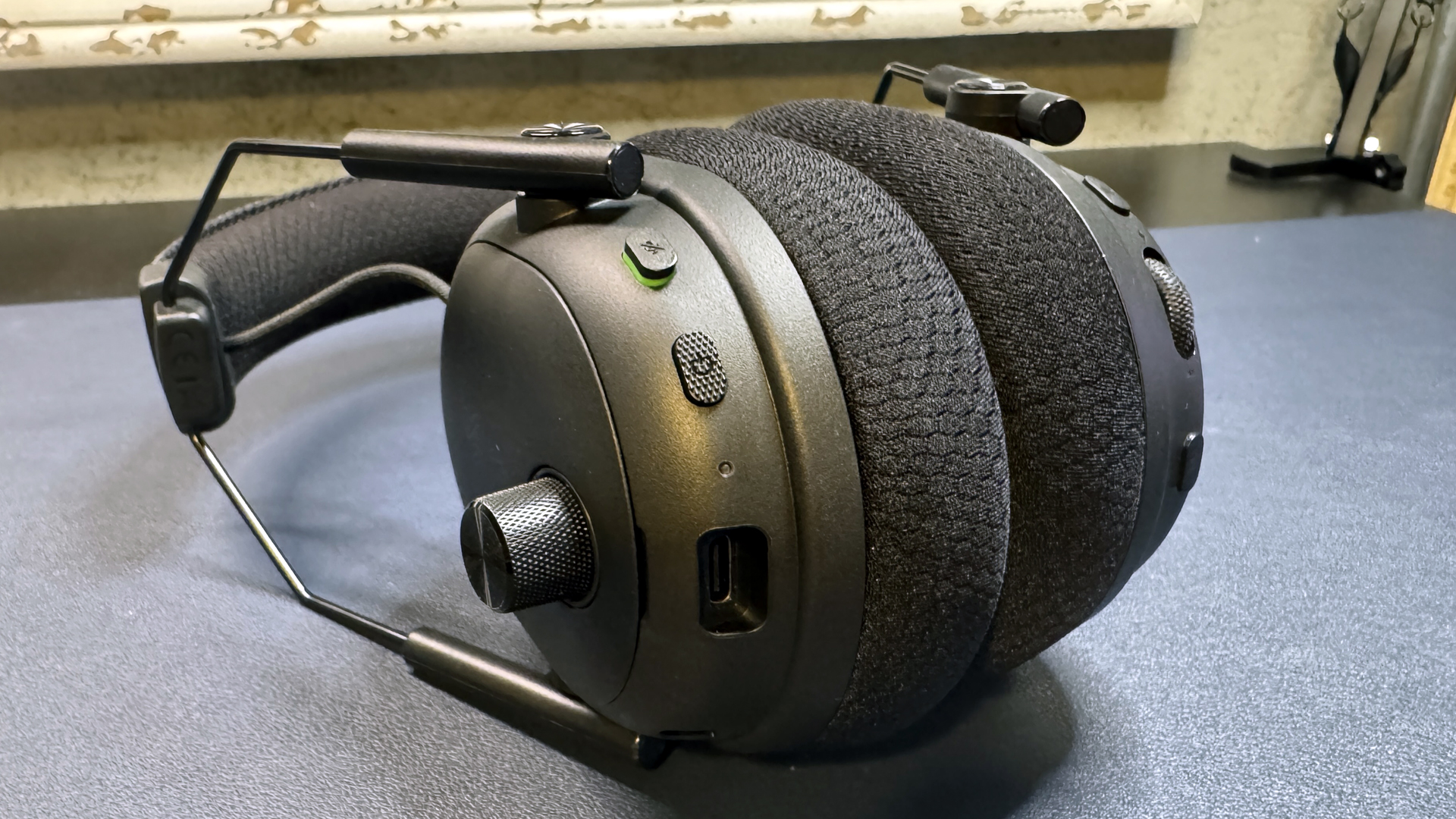
Along the side of the left earcup, from front to back, you'll find a 3.5mm microphone jack, a USB-C charging port, a power button (textured to distinguish it from other buttons), and a physical mic mute switch. I do not love this mute switch — while it is nice to have a switch, rather than a button, so you can tell what position it's in... I always forget what position is muted. Perhaps that's because the pressed-in position is muted, and it just feels like that should be the un-muted position. I don't know, but I've spent weeks with this headset and it hasn't gotten any more intuitive.
Get Tom's Hardware's best news and in-depth reviews, straight to your inbox.
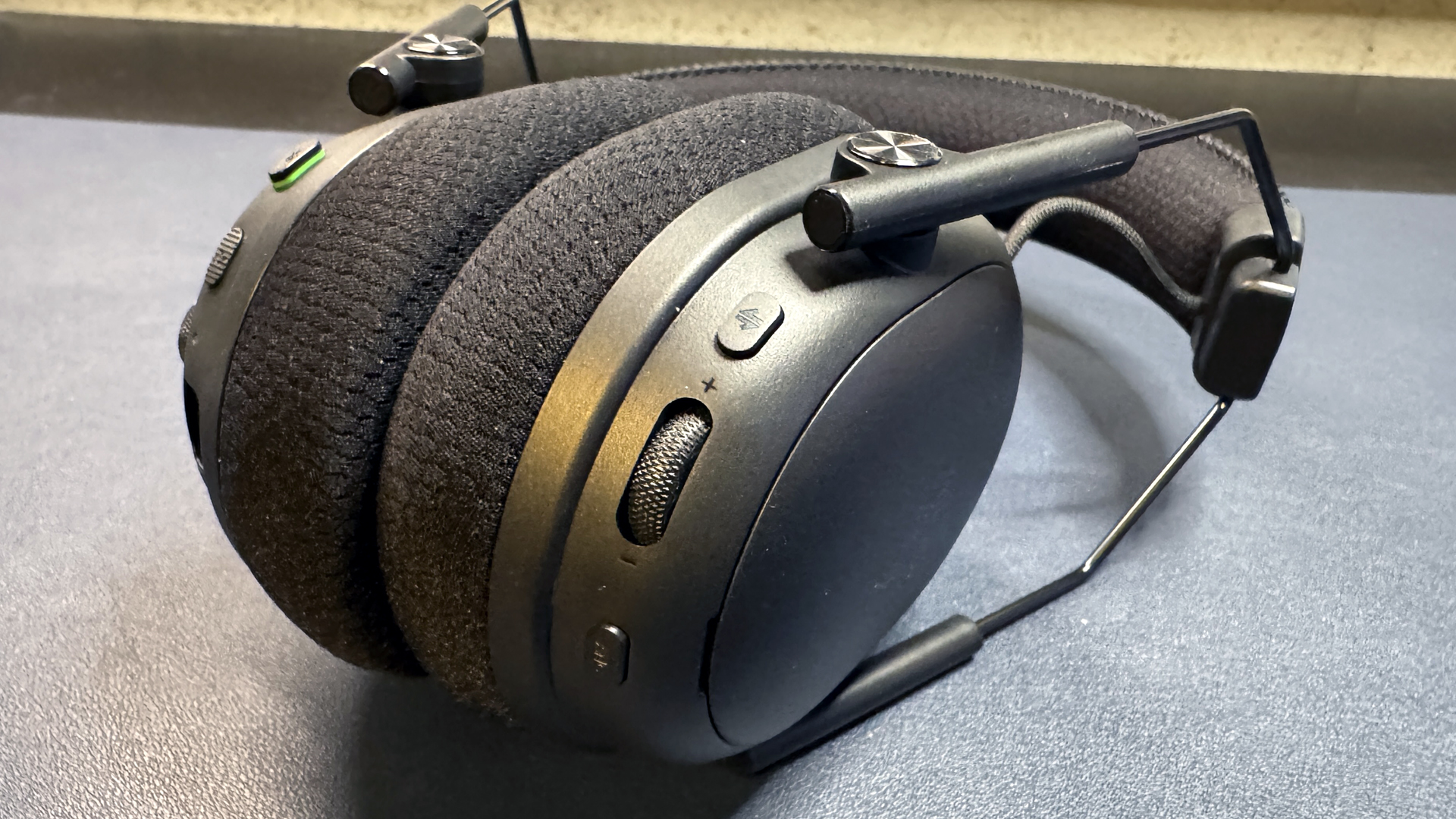
Along the side of the right earcup, from front to back, there's an ANC button, a configurable roller (by default, this adjusts the balance between your two wireless inputs), and a multi-function button that switches between EQ presets and acts as a pairing button for Bluetooth.
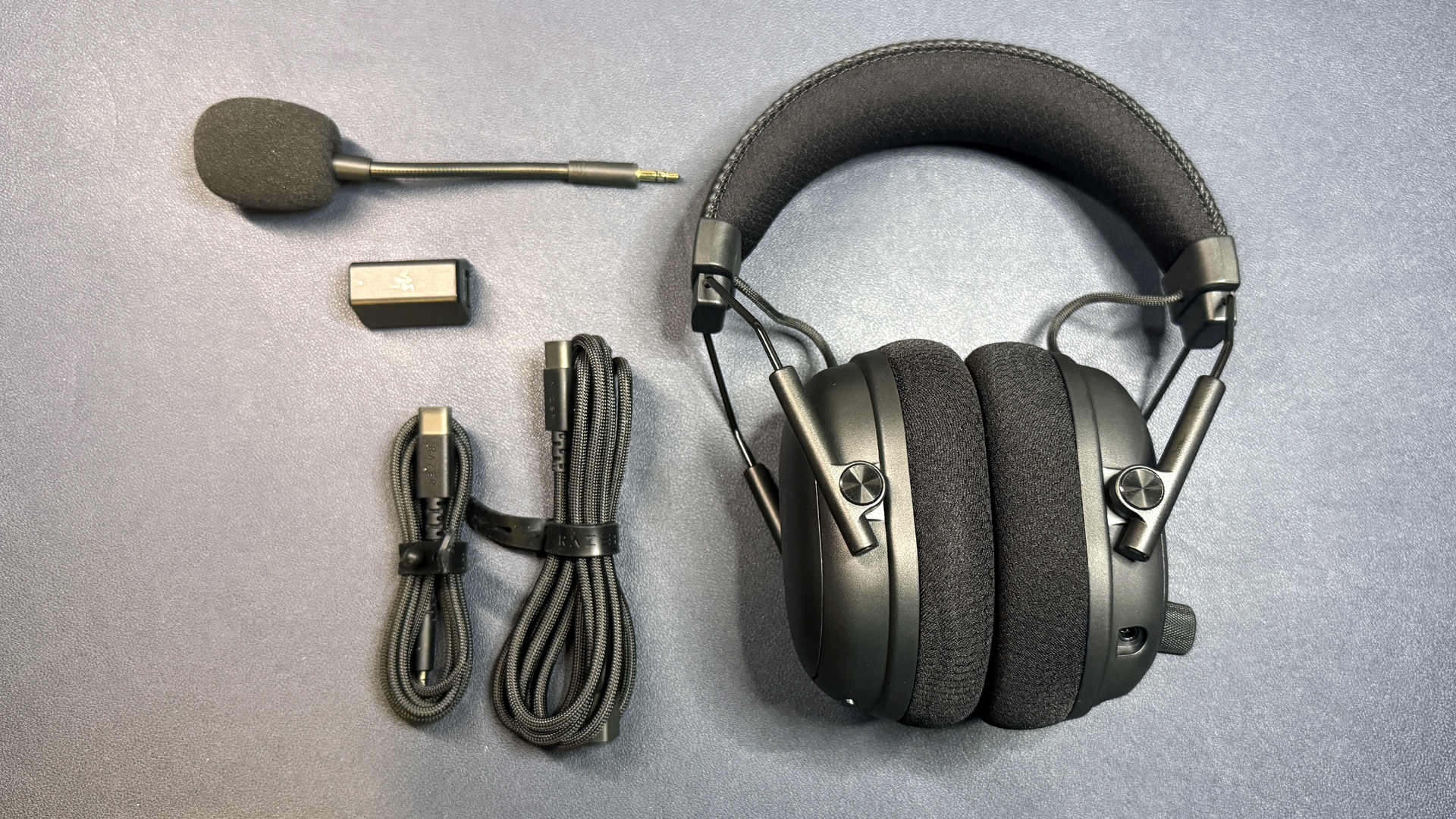
In the box, the BlackShark V3 Pro comes with a removable boom mic, a 2.4GHz wireless dongle (which plugs into your PC via a USB-C cable), a 5-foot (1.5m) USB-C to USB-A cable, and a 5-foot USB-C to 3.5mm (analog) jack.
Specs
Driver Type | 50mm Triforce Bio-Cellulose (Dynamic) |
Impedance | 32Ω |
Frequency Response | 12 - 28,000 Hz |
Design Style | Circumaural |
Microphone Type | 12mm full band |
Connectivity | 2.4GHz wireless, Bluetooth 5.3, wired (USB-C), 3.5mm analog |
Weight | 12.96oz / 367g |
Cord Length | 5ft / 1.5m USB-C to USB-A 5ft / 1.5m 3.5mm to USB-C |
Battery Life | 70 hours (2.4GHz wireless) |
Lighting | None |
Software | Synapse |
MSRP / Price at Time of Review | $249.99 |
Release Date | July 29, 2025 |
Audio Performance of the BlackShark V3 Pro
The BlackShark V3 Pro features Razer's 50mm Triforce Bio-Cellulose dynamic drivers, which have a frequency response range of 12 - 28,000 Hz. That's a little wider than the typical gaming headset frequency response range of 20 - 20,000 Hz, though it's not uncommon to see gaming headsets with wider frequency response ranges (especially premium flagship headsets). It's the same frequency range as the 50mm titanium drivers in the BlackShark V2 Pro (2023), however.
Listening to music on the BlackShark V3 Pro sounds okay — lows are decently powerful and mids are nicely present, especially in my favorite mid-heavy song, K-391's Lonely World. I wasn't particularly impressed with the detail in the low end — I did not get anywhere near the full run of the drums in the beginning of Lorde's Royals, but at least nothing sounded too muddied in Kaskade's POW POW POW. The high end, unfortunately, was less good: The strings in Britney Spears' Toxic were so distorted they were painful to listen to. Needless to say, this would not be my go-to headset for music.
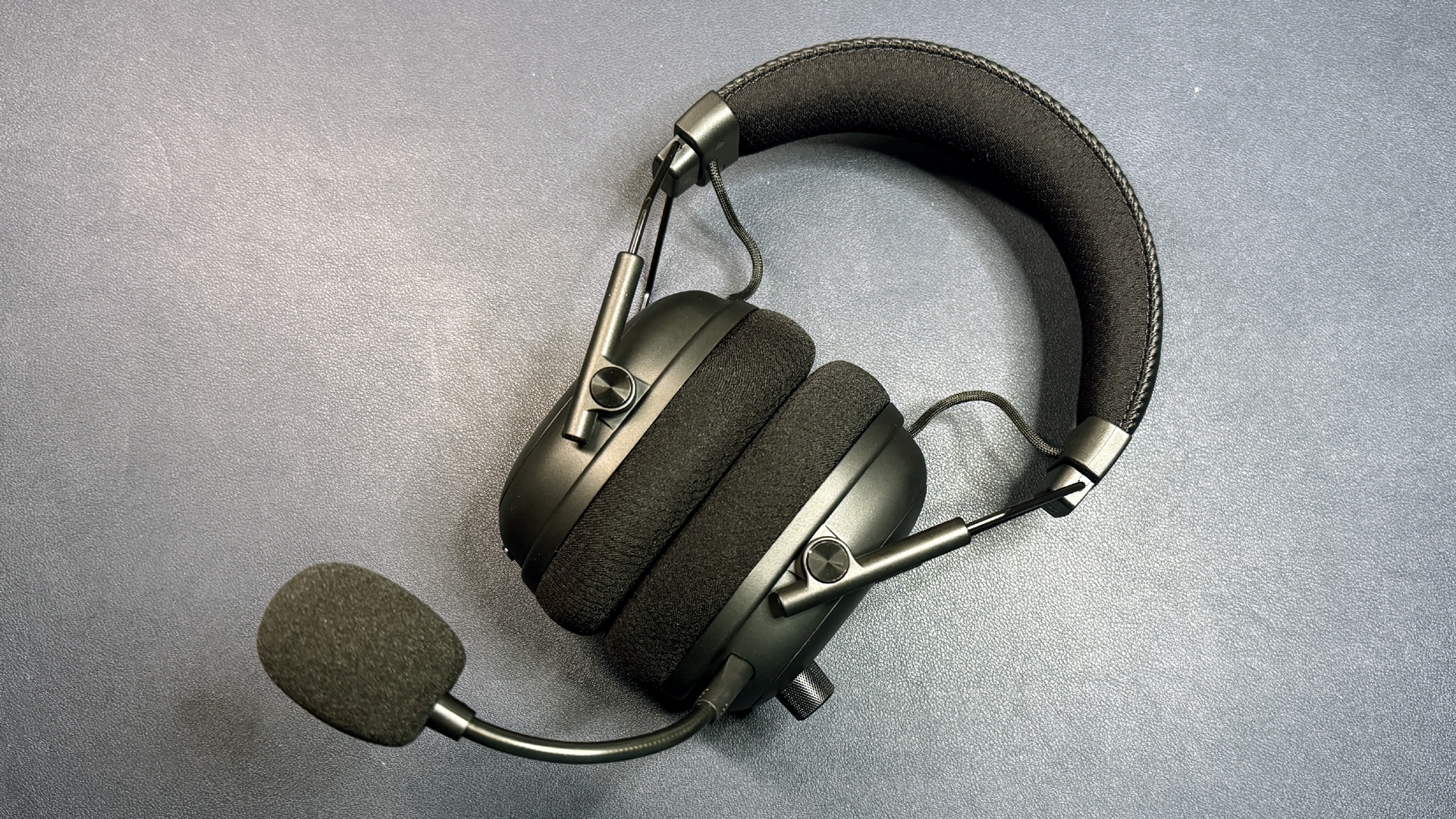
Luckily, just because a headset isn't great for music doesn't mean it can't still be pretty decent for gaming — and the BlackShark V3 Pro performed well as a gaming headset. The headset does an excellent job with directional audio — I had no problem telling which direction footsteps or gunshots were coming from in Counter-Strike 2, even without THX Spatial Audio turned on. The headset does come with built-in THX Spatial Audio (Razer owns THX), which gives you access to THX's preset game profiles — both competitive and immersive.
The BlackShark V3 Pro also features active noise cancellation, which is a somewhat rare feature to see in gaming headsets — especially gaming headsets that aren't designed to double as lifestyle headsets. However, since the V3 Pro doesn't really double as a lifestyle headset, I'm not sure how valuable this feature will be for most gamers; it might be useful if you've got roommates or loud PC fans, but the headset's seal is fairly tight (especially now that the earcups swivel), and I found the passive noise cancellation to be more than enough.
Microphone of the BlackShark V3 Pro
I had high hopes for the BlackShark V3 Pro's detachable boom mic, as the boom mic on the BlackShark V2 Pro (2023) is the best boom mic I've ever seen (or heard) on a gaming headset. The mic on the BlackShark V3 Pro should be better, as it's a full-band 12mm "HyperClear" microphone (versus the V2 Pro's 9mm). It comes with a removable foam pop filter and sits on the end of a 4-inch flexible gooseneck arm, and plugs into the headset via a 3.5mm jack.

Unfortunately, the BlackShark V3 Pro's mic did not live up to my expectations. It definitely didn't impress anyone the way the BlackShark V2 Pro (2023)'s mic did, and it actually sounded a little worse than your average gaming headset boom mic. I thought this might be due to the software, but it sounded the same even with all software "enhancements" turned off — my voice was full enough, but I sounded a little muffled and fuzzy over various video conferencing platforms, including Discord and Google Meet. Razer did push out a firmware update designed to improve the mic's out-of-the-box performance, but it didn't do much to improve the fuzziness issue.
Features and Software of the BlackShark V3 Pro
The BlackShark V3 Pro can be configured using Razer's universal peripheral software, Synapse 4. The software features a 10-band equalizer for tweaking the audio presets, as well as the ability to set up game profiles for each of your games, which is a nice touch (you can set this up so each game points to one of your custom EQs or THX's existing game profiles). The headset comes with five stored EQ presets out of the box: default, game, movie, music, and eSports (Valorant). You can store up to nine EQ presets on the headset, including up to five eSports presets, and you can switch through these presets using the multifunction/EQ button.
Synapse also lets you tweak some audio enhancements (some of which can also be tweaked on the headset itself), including ANC and in-call audio mixing, which lets you set how you want simultaneous dual wireless connectivity to work (if you want it to work at all). You can also adjust some power settings, such as how long the headset stays on while idle, and pick what you want the light on the dongle to indicate (connection status, battery status, or low battery warning).
You can also tweak the microphone in Synapse, though it's not great out of the box, and I couldn't find any settings that improved it particularly well. You can adjust the microphone's input (gain) and play with the 10-band equalizer (there are a handful of presets to get you started), and you can turn on "mic enhancement," which has several features that do various things (though none of them worked particularly well for me), including normalizing volume, upping vocal clarity, and turning on noise cancellation. There's also mic monitoring, which allows you to hear your voice back as you speak, but I didn't love the way Razer implemented this — my voice sounded fuzzy and distorted, which was distracting.
Battery Life of the BlackShark V3 Pro
Razer rates the BlackShark V3 Pro's battery life at 70 hours of a 2.4GHz wireless connection, which is solid — not the highest we've seen, but in line with other premium, flagship gaming headsets from mainstream gaming companies. Of course, the BlackShark V2 Pro (2023) is also rated at 70 hours, so this isn't an improvement over the previous generation.
Bottom Line
Razer's BlackShark V3 Pro is sort of a toss-up. While Razer has added all of the connectivity I wanted in the BlackShark V2 Pro (2023) — simultaneous dual 2.4GHz wireless and Bluetooth connectivity, as well as wired via analog and USB — I don't necessarily need multiple forms of connectivity in a gaming headset. Or, well, I certainly don't want it as much as I want other features, such as well-tuned audio and an excellent boom mic. I was impressed with how well the BlackShark V3 Pro's simultaneous dual audio mixing worked. Not only did it manage to stay connected to both of my devices (even when I was switching things around, as I often do), the volume mixing wheel on the right ear cup worked perfectly for balancing audio between two devices.
But I'd give up simultaneous dual wireless audio mixing for great all-around audio and an impressive mic — and a cheaper price tag. At this point, the BlackShark V2 Pro (2023) may not be quite as convenient or as feature-rich as the BlackShark V3 Pro, but it's $50 cheaper (and likely on further discount) and it sounds better — and makes you sound better.

Sarah Jacobsson Purewal is a senior editor at Tom's Hardware covering peripherals, software, and custom builds. You can find more of her work in PCWorld, Macworld, TechHive, CNET, Gizmodo, Tom's Guide, PC Gamer, Men's Health, Men's Fitness, SHAPE, Cosmopolitan, and just about everywhere else.
